Crabs are fascinating creatures that dwell in our oceans and along coastal areas. They belong to the animal kingdom and are part of the arthropod phylum. These intriguing animals have a long history that dates back millions of years.
Crabs come in a variety of shapes and sizes. While some species can fit snugly into the palm of a child’s hand, others can grow as large as a dinner plate! These crustaceans have a hard exoskeleton to protect their bodies, which they continuously shed as they grow.
Crabs are known for their unique sideways walking pattern, which distinguishes them from other creatures in the animal kingdom. They are also famous for their claw-like solid pincers, which they use for various purposes such as feeding, defence, and communication.
These incredible creatures thrive in various habitats, ranging from sandy beaches to rocky shores. Crabs can adapt to saltwater and freshwater environments, making them highly adaptable and resilient. They are also known to burrow into the sand or hide amongst coral reefs to protect themselves from predators.
History of Crab’s

Crabs are fascinating creatures that have roamed our planet for millions of years. Their history dates back to the early Jurassic period, around 200 million years ago. These hard-shelled animals belong to crustaceans, including lobsters and shrimp.
Crabs can be found in every ocean around the world, from the icy waters of the Arctic to the warm tropical seas. They come in various shapes, sizes, and colours but share some common characteristics. The most noticeable feature of a crab is its two large pincers, which they use for defence and capturing prey.
Throughout history, crabs have played significant roles in different cultures. In Ancient Rome, they were considered a delicacy and were served at luxurious feasts. In Chinese folklore, crabs were associated with beauty and grace and were often used as symbols in paintings and poetry.
Crabs are well-adapted to their environments. Some live on land, scuttling across sandy beaches, while others dwell in deep-sea trenches. They have a unique way of moving sideways, which helps them navigate through narrow spaces and escape predators. These creatures are also known for their ability to regenerate lost limbs, a trait that sets them apart from many other animals.
Crabs have a rich history that spans millions of years. From their origins in the prehistoric oceans to their presence in various cultures, they captivate our imagination. These remarkable animals demonstrate the incredible diversity and adaptability of life on Earth, reminding us of nature’s endless wonders.
Importance of Crab
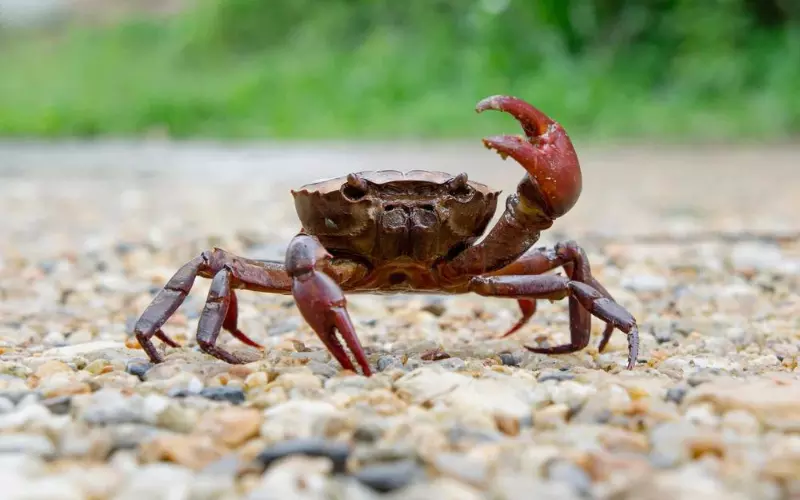
Crabs are fascinating creatures that play an essential role in our ecosystem. They are found in oceans, lakes, and land, with over 4,500 species worldwide. These animals are crucial for maintaining the balance of marine and terrestrial environments.
Firstly, crabs help to keep our ocean waters clean. They are scavengers, feeding on dead plants, animals, and a variety of organic matter. By consuming these decaying materials, crabs prevent them from polluting the water and spreading diseases. In this way, crabs act as natural cleaners, ensuring the health and well-being of other marine organisms.
Secondly, crabs are an essential part of the food chain. They are a favourite meal for many larger animals, such as seabirds, fish, and even humans. Their presence in the food chain provides nutrition for these creatures and acts as a source of income for many coastal communities through fishing and crabbing activities.
Lastly, crabs contribute to the functioning of ecosystems by creating caves and tunnels in the sand or soil. These structures serve as homes for other tiny organisms and help aerate the sediment. By doing so, crabs enhance oxygen circulation and waste removal, contributing to a healthy and thriving environment.
Crabs play a vital role in our ecosystem. They clean our ocean waters, provide a source of food, and create habitats for other organisms. It is crucial to protect and preserve these fascinating animals to maintain the delicate balance of our environment.
Amazing Facts About Crab’s
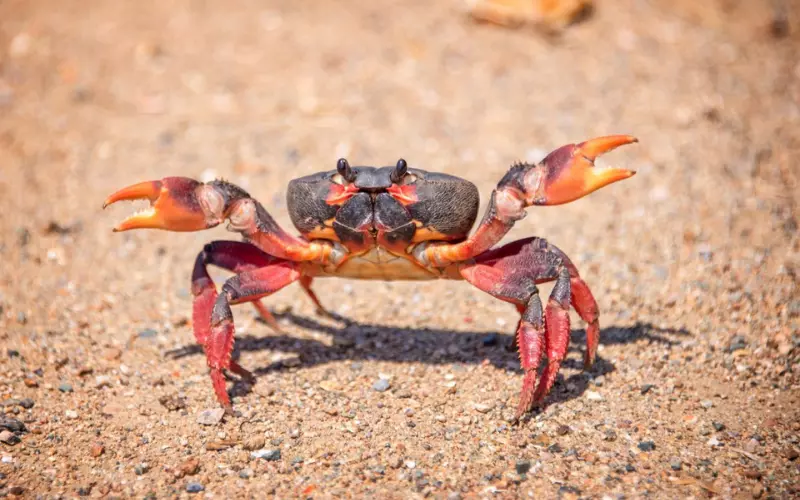
1. Crabs are crustaceans living in saltwater and freshwater habitats.
2. There are over 4,500 crabs varying in colour, shape, and size.
3. They have a hard exoskeleton that protects their body and provides support.
4. Crabs have two pincer-like claws used for catching prey, defence, and communication with other crabs.
5. The largest crab species is the Japanese spider crab, with a leg span of up to 12 feet.
6. Some crabs can regenerate lost limbs if damaged or broken.
7. Crabs are omnivores, meaning they eat both plants and animals. They have a varied diet that includes algae, molluscs, worms, and small fish.
8. Most crabs are scavengers, often feasting on dead animals they find on the ocean floor.
9. They have a unique way of walking called scuttling, where they move sideways using their legs.
10. Some crabs, like the coconut crab, can climb trees and even crack coconuts with strong claws.
11. Female crabs can carry thousands of eggs beneath their abdomen, taking care of them until they are ready to hatch.
12. Crabs have a highly efficient respiratory system, with gills that allow them to extract oxygen from the water.
13. Many species of crabs are known for their ability to change colour to match their surroundings as a form of camouflage.
14. They have compound eyes, which allow them to see in various directions without moving their heads.
15. Crabs play an essential role in maintaining the balance of ecosystems as both predator and prey.
Can we keep Crab as our Pet?

Keeping a crab as a pet can be a fun and exciting experience. However, a few things to consider before bringing a crab into your home. First of all, it is essential to understand the needs of a crab and whether you can provide them with a suitable environment. Crabs require a specialized habitat with sand, water, and hiding places, as well as a heat source and regular maintenance to ensure their well-being.
In addition to providing a proper habitat, it is essential to understand that crabs have specific dietary needs. They need a balanced diet that includes a variety of foods such as fish, shrimp, and vegetables. It is essential to do research and consult with a veterinarian to ensure you are feeding your pet crab correctly.
Lastly, it is essential to remember that crabs are not as interactive or affectionate as other pets. While they can be fascinating, they can be shy and prefer to spend their time hidden. Respecting their space and not handling them too often is crucial, as this can cause stress and even harm them.
Keeping a crab as a pet can be a rewarding experience if you are willing to meet their unique needs. Providing a suitable habitat, a proper diet, and understanding their behaviour are all crucial elements to ensure the well-being of your pet crab. Remember, crabs may not be as interactive as other pets, so observing them from a distance and handling them with care is essential.
Size of Crab’s

Crabs are marvellous creatures that come in a variety of sizes. The size of a crab can depend on the species and its habitat. Some crabs are small, while others can grow to be quite large. Let’s explore their sizes in more detail!
Firstly, tiny crabs can fit in the palm of your hand. These cute little creatures, like the pea crab, can measure just a few millimetres in width. They are so small that they often live inside the shells of other marine animals, like clams or oysters, for protection. These miniature crabs are fascinating to observe and remind us that even the smallest creatures play an essential role in our ecosystem.
On the other end of the spectrum, some crabs can grow massive. The Japanese spider crab holds the record for the largest leg span of any arthropod, reaching up to 13 feet! Imagine how gigantic that must be! These giants live in the ocean’s depths and have long, spindly legs, which help them move around their environment. These colossal crabs are indeed a sight to behold.
In between the tiny and giant crabs, there are many more species that come in different sizes. From the small hermit crabs found on beaches to the medium-sized blue crabs commonly eaten in some regions, each species has its unique dimensions. Overall, the world of crabs is diverse, ranging from the minuscule to the massive, showcasing the wonders of nature’s variety.
Habitat of Crab’s
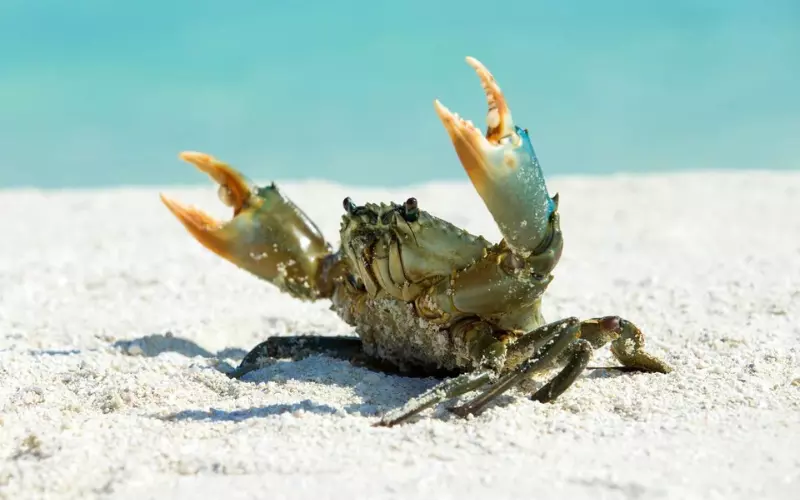
Crabs can be found in a variety of habitats around the world. These fascinating creatures love to live near the water, where they can scuttle along sandy beaches, rocky shores, and even coral reefs. Crabs are well-adapted to their habitats, with their tough exoskeletons and powerful pincers that help them survive and thrive in their environments.
One of the most common habitats for crabs is the coastal area, where the land meets the sea. Crabs make their homes in sandy or muddy areas along the shore, digging burrows to protect themselves from predators and the waves. They can also camouflage themselves to blend in with their surroundings, making it harder for predators to spot them. Coastal habitats provide crabs with abundant food, such as small fish, seaweed, and other marine creatures.
Another habitat for crabs is the rocky shore. Crabs can hide in crevices and tide pools when the tide is low and venture out to feed when the water rises. Some crabs even have specially adapted legs that allow them to grip the rocks tightly, preventing them from being washed away by the waves. These habitats provide crabs with a diverse diet of algae, small invertebrates, and even the occasional injured or dead fish.
Lastly, crabs can also be found in coral reefs. These vibrant and bustling underwater communities provide crabs with a safe place to live among the nooks and crannies of the coral structures. Crabs in coral reefs are known for their vibrant colours and unique shapes, which help them blend in with colourful corals and sponges. They scavenge for food in the reef, munching on decaying matter, tiny organisms, and algae.
Crabs inhabit various environments near the water, including sandy beaches, rocky shores, and coral reefs. These habitats provide them shelter, camouflage, and a diverse food supply. Crabs have adapted to their surroundings with their strong exoskeletons and powerful pincers, allowing them to thrive in their unique habitats.
Classification of Crab’s

Crabs are fascinating animals found in oceans and other bodies of water worldwide. They belong to a group of animals called crustaceans, which also include lobsters, shrimp, and barnacles. Crabs are known for their distinctive appearance with a tough shell, two large claws, and a sideways walking motion.
Crabs are classified into a specific scientific group called decapods. This classification means they have ten legs, with the first pair being modified into claws. They are further categorized into families based on physical features, habitat, and behaviours. Some typical families of crabs include true crabs, hermit crabs, and spider crabs. Each family has its unique characteristics and adaptations.
True crabs like blue crabs and Dungeness crabs have a flat, vast body with a hard shell and powerful front claws. They are excellent swimmers and are commonly found near coastal areas. On the other hand, Hermit crabs have soft abdomens and use discarded shells of other animals for protection. They live in shells and are often seen on sandy beaches. Spider crabs have a long, spindly appearance with thin legs and are typically found in deeper waters.
Crabs belong to the crustaceans group and are classified as decapods due to their ten legs. They are further divided into families based on their physical features and habitat. True crabs, hermit crabs, and spider crabs are some common types of crabs found worldwide, each with unique characteristics and adaptations.
Different Types of Crabs

1. Blue Crab: One of the most common crabs on the Atlantic coast. It has a bright blue colouration and is known for its aggressive behaviour. Blue crabs are a popular seafood choice due to their tender meat and delicious taste.
2. Dungeness Crab: Found on the Pacific coast of North America. Dungeness crabs have a reddish-brown colour with black-tipped claws. They are highly sought after for their sweet and flavorful meat, often used in various seafood dishes.
3. Snow Crab: Native to the cold waters of the North Atlantic and North Pacific oceans. Snow crabs have long, spindly legs and a light orange colour. They are a popular choice for seafood lovers because of their delicate and slightly sweet taste.
4. King Crab: King crabs are known for their large size, with some species growing up to 5 feet long. They have a reddish-brown colour and distinct spiky legs. King crab legs are prized for their tender and succulent meat, often enjoyed with melted butter.
5. Red Rock Crab: Found on the west coast of North America. Red rock crabs have a red-brown colour with white spots or stripes. They are often used as a substitute for Dungeness crabs and have a similar flavour profile.
6. Jonah Crab: Found in the western Atlantic Ocean. Jonah crabs have a reddish-brown colouration with black-tipped claws. Their meat is tender, sweet, and often used in crab cakes and seafood soups.
7. Green Crab: Native to Europe but has become invasive in many parts of the world. Green crabs have a greenish-brown colour with yellow or red highlights. Although not as famous for consumption, they have a delicate flavour and are used in some seafood dishes.
8. Horseshoe Crab: Horseshoe crabs are not true crabs but have a similar appearance. They are known for their unique horseshoe-shaped hard shell and long, pointed tails. These ancient creatures have blood used in medical research and have been around for millions of years.
9. Coconut Crab: Found on islands in the Indian and Pacific oceans. Coconut crabs are the largest land-dwelling arthropods and can weigh up to 9 pounds. While not commonly eaten, some regions consider their flesh a delicacy.
10. Hermit Crab: Hermit crabs have soft abdomens and use empty seashells as protective homes. They can be found in oceans worldwide and are popular as pets. Hermit crabs scavenge for food and have a curious and playful nature, making them attractive to observe.
Geographical Presence of Crab
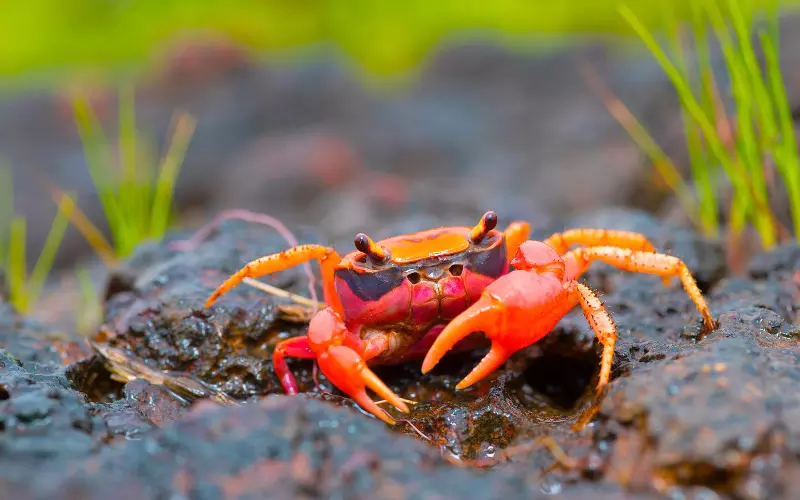
Crabs are commonly found in various regions around the world. They can be found in both saltwater and freshwater environments. Coastal regions, such as beaches, estuaries, mangroves, and coral reefs, are known to be habitats for many species of crabs. These areas provide the necessary resources for crabs to thrive, including food, shelter, and suitable water conditions. Crabs also live in lakes, rivers, and ponds as long as the water is not too deep or fast-flowing.
However, there are regions where crabs are not found. One such region is the desert. Crabs prefer moist environments and depend on bodies of water to survive. Deserts, with their arid conditions, lack the necessary resources and conditions for crabs to live. So, if you’re in a desert, you won’t be able to find any crabs there.
Another region where crabs are not found is in areas covered by snow and ice, such as the polar regions. These regions are icy, and crabs cannot survive such harsh conditions. The icy terrain also makes it difficult for them to find food and shelter. Therefore, you won’t see crabs there if you’re in the Arctic or Antarctic.
Crabs can be found in coastal areas, including beaches, estuaries, mangroves, and coral reefs, as well as in freshwater environments like lakes, rivers, and ponds. However, crabs are not found in deserts due to the lack of water and in the polar regions due to the extreme cold. So, if you want to encounter crabs, it’s best to head to coastal or freshwater regions, but don’t expect to find them in deserts or icy terrains.
Diet of Crab’s
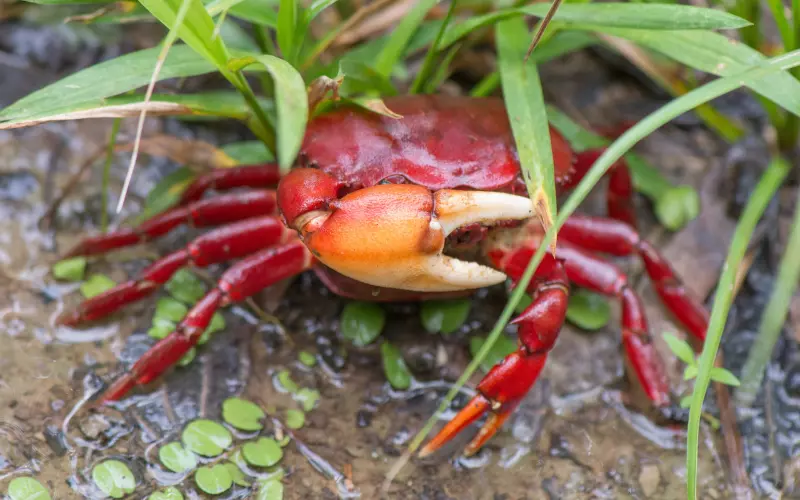
Crabs have a unique and exciting diet. They are known as omnivores, meaning they eat plants and animals. Their diet mainly consists of small fish, clams, mussels, algae, and plankton. They scavenge for food on the ocean floor and use their strong claws to catch their prey.
Crabs are opportunistic feeders, meaning they will eat whatever food they can. They have a keen sense of smell, which helps them locate their food. When they find something they want to eat, they use their powerful claws to crush and break it into smaller pieces that they can easily consume.
In addition to animal matter, crabs also eat plants and algae. They use their claws to scrape algae from rocks and eat it. Some crabs even have tiny hair-like appendages on their claws that help them filter food particles from the water.
Crabs have a diverse diet, including plants and animals. They are omnivores, meaning they eat various food to survive. Their solid claws and keen sense of smell help them find and catch their prey. Whether it’s a small fish, clam, or even algae, crabs are skilled hunters who can adapt to their surroundings to find the food they need.
Locomotion of Crab’s
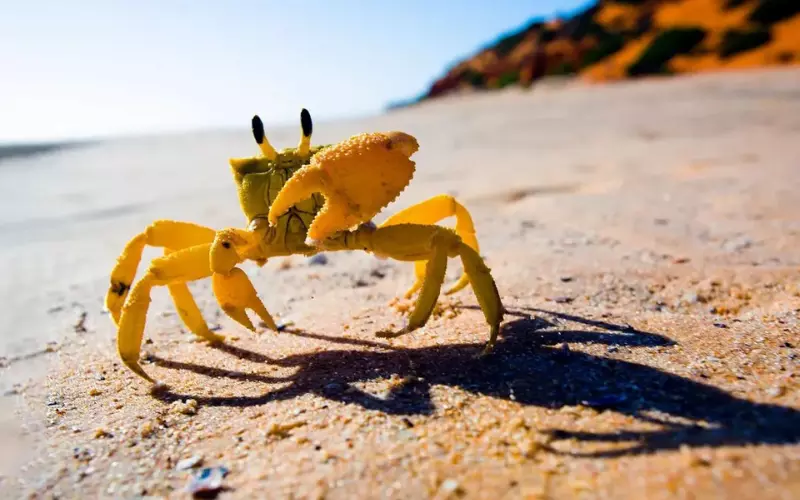
Crabs move in a unique way called locomotion. Using their strong legs, they scuttle sideways on land and swim sideways in water. When a crab moves on land, it moves each leg on one side at a time. This gives it a sideways motion, and it can quickly change direction. Crabs have a unique joint in their legs that allows them to move quickly and crawl on different surfaces.
In water, crabs paddle their legs to swim sideways. Their back legs have flat paddles that help them move through the water. They can also move backwards by flipping their tails. Crabs are very good at adjusting their movements based on their environment. Whether walking on land or swimming in water, their locomotion helps them adapt and survive in their habitats.
Social and Sexual Behaviour of Crab’s
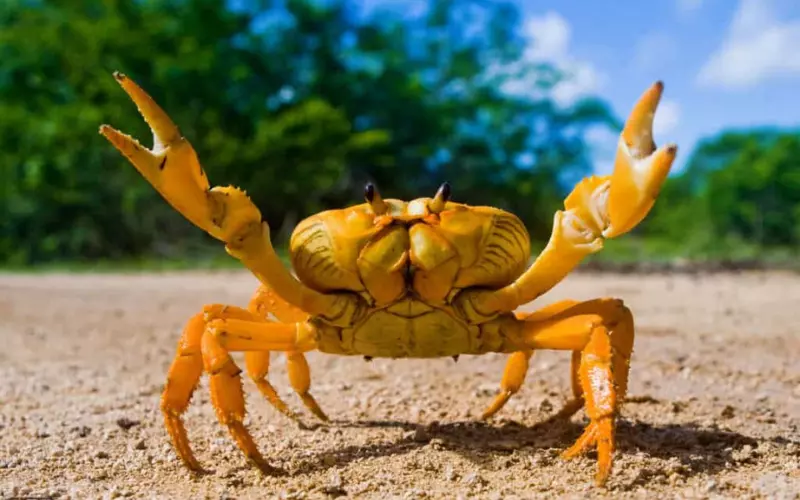
Like many other creatures, crabs have unique habits when it comes to socializing and mating. These small but fascinating creatures engage in various social behaviours that help them communicate and establish their territories. In addition, crabs also have interesting sexual behaviours that ensure the continuation of their species.
Regarding social behaviour, crabs often live together in large groups called aggregations. These gatherings enable them to find protection, share food, and communicate with one another. Crabs use a combination of visual signals and chemical cues to convey messages within their group. For example, they may wave their pincers or perform specific body movements to communicate aggression or submission. Additionally, crabs have a keen sense of smell, which they use to identify members of their group.
Regarding sexual behaviour, crabs have unique courtship rituals and mating strategies. Male crabs often compete with one another for the attention of females. They may fight or engage in dominance displays to establish their superiority and gain the opportunity to mate. Once a female crab chooses a mate, the male will protect her until she moults or sheds her old exoskeleton. After moulting, the female releases pheromones that attract the male for mating. The female then carries fertilized eggs until they hatch into larvae.
Crabs exhibit interesting social and sexual behaviours. They form groups to communicate and provide protection, using visual and chemical signals to interact with each other. When it comes to mating, male crabs compete for the attention of females and engage in courtship rituals. These behaviours ensure the survival and propagation of the crab species.
Reproduction and Lifecycle of Crab’s
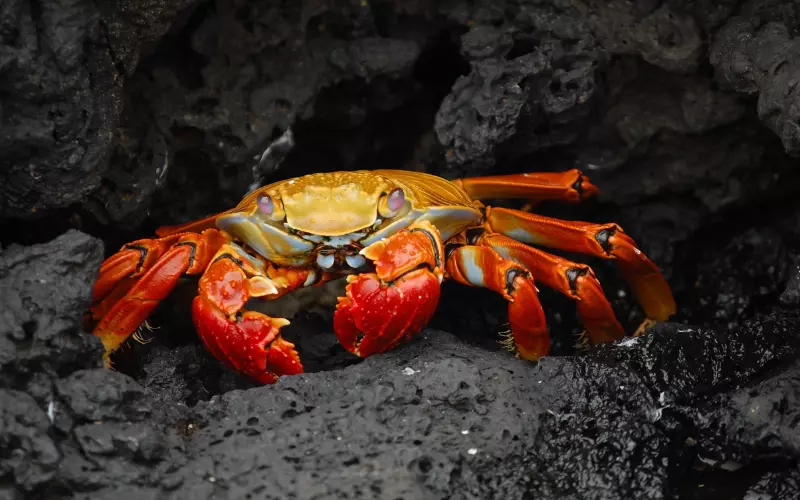
Crabs are fascinating creatures that have a unique life cycle. The reproduction process of crabs begins with the female crab releasing her eggs into the water. These eggs are tiny and transparent. They float in the water until they hatch into larvae called zoea. The zoea larvae then go through several stages of development before becoming juvenile crabs.
During the zoea stage, the larvae feed on microscopic organisms in the water. As they grow bigger, they moult their exoskeleton or outer shell and form a new, larger one. This process is called moulting. After several moults, the zoea develops into megalopa, which is the next stage of their life cycle.
The megalopa is more robust and more developed than the zoea. Crabs start developing their characteristic features, such as claws and distinct body shapes, at this stage. Eventually, the megalopa will undergo one more moult and become a juvenile crab. During this final moult, the juvenile crab becomes miniature versions of adult crabs, but they are still not fully grown.
As the juvenile crabs mature, they will moult their exoskeletons multiple times. Each moult allows them to grow bigger and stronger. Eventually, they will reach adulthood and be able to reproduce. The life cycle of a crab continues as the adult crabs mate, and the females release their eggs into the water, starting the process all over again.
Crabs have a fascinating life cycle that starts with female crabs releasing tiny eggs into the water. These eggs hatch into zoea larvae, which go through several stages of development before becoming megalopa and, finally, juvenile crabs. These juvenile crabs continue to moult and grow until adulthood when they can reproduce, and the cycle begins again.
Threats to Crab’s
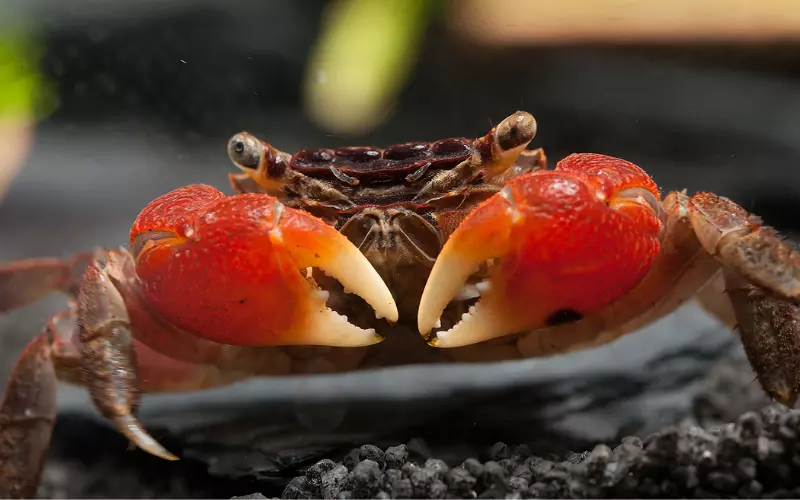
Crabs face several threats that can affect their survival. One of the main threats is habitat destruction. When humans destroy coastal areas, like mangroves and coral reefs, the homes of crabs get destroyed, too. Without a proper habitat, crabs struggle to find shelter, food, and protection from predators. This makes their survival very difficult.
Another threat to crabs is pollution. When chemicals and waste are released into the oceans, it can harm the crabs and their habitat. For example, oil spills can cover crabs’ bodies and suffocate them. Moreover, pollution can contaminate their food sources, making them sick or killing them. Humans must prevent pollution and clean up their messes to protect crabs and other sea creatures.
Lastly, overfishing is a significant threat to crabs. When people catch too many crabs for food or selling, it can disturb the balance in the ecosystem. Crabs are essential in keeping the ocean clean by eating dead plants and animals. If too few crabs exist, the ocean can become dirty, harming other marine species. Proper regulations and sustainable fishing practices are necessary to ensure the crab population remains healthy for the benefit of the ocean ecosystem.
Crabs face multiple threats to their survival. Habitat destruction, pollution, and overfishing pose significant risks to these fascinating creatures. Humans must be aware of these threats and take necessary actions to protect the habitats and future of crabs, as they are vital for the health and balance of our oceans.
Conclusion
Crabs are fascinating creatures found in various parts of the world. These animals, belonging to a group known as decapods, have a fascinating history and are known for their unique characteristics and habitats.
Crabs have been around for millions of years and have gone through several changes in their physical appearance. They are known for their hard exoskeleton, which provides protection and support. Crabs come in different sizes, with the most giant known crab being the Japanese spider crab, which has a leg span of up to 13 feet.
These remarkable creatures can be found in various habitats, including saltwater and freshwater. They can be found in oceans, seas, rivers, and land. Crabs are adaptable and can survive in different conditions, from tropical to arctic regions.
Crabs are fascinating creatures with a rich history and unique characteristics. With their hard exoskeletons and adaptable nature, these animals have survived and thrived for millions of years. Whether scuttling along sandy beaches or burrowing in the ocean’s depths, crabs continue to captivate us with their intriguing ways.
Frequently Asked Questions about Crab’s (FAQ’s)
What is a crab?
A crab is a crustacean with a short, flat body, a broad shell, and two pairs of pincers.
How many species of crabs are there?
There are over 5,000 known species of crabs.
Where can crabs be found?
Crabs can be found in various marine and freshwater environments worldwide.
Are crabs social animals?
Crabs are generally solitary animals, but some species exhibit social behaviours and live in large groups.
What do crabs eat?
Crabs have a diverse diet and usually feed on algae, molluscs, small fish, residue, and other organic matter.
How do crabs defend themselves?
Crabs have a strong exoskeleton and can use their pincers to defend themselves from predators.
Can crabs swim?
Most crabs are not strong swimmers but can move through the water by swimming sideways using their appendages.
How long do crabs live?
The lifespan of crabs varies depending on the species, but it generally ranges from 1 to 20 years.
Do crabs moult?
Yes, crabs undergo moulting, where they shed their old exoskeleton and grow a new one as they grow in size.
Can crabs regenerate lost limbs?
Yes, crabs can regenerate lost limbs through autotomy.
Do crabs have predators?
Crabs have several natural predators, including fish, birds, octopuses, and larger crustaceans.
What is the largest species of crab?
The Japanese spider crab is considered the largest crab species, with a leg span of up to 3.7 meters (12 feet).
Can crabs breathe underwater?
Crabs have gills in their appendages, allowing them to extract oxygen from the water.
Are crabs nocturnal creatures?
Some crab species are more active at night, but the activity patterns can vary depending on the species and habitat.
Are crabs endangered?
While some crab species face threats due to habitat destruction and overfishing, the overall population of crabs is relatively stable and not considered endangered.

Hi there, I’m Emily Buono, and I’m thrilled to introduce myself! Currently, I’m part of two fantastic places: I work as a VisEx at the New England Aquarium and as an RAS at MGH CCM.
I completed my education at the Mass General Research Institute and Stonehill College, which is located in Valatie Colony, New York, in the United States.
Now, here’s the exciting part: I absolutely adore animals! They captivate me, and I’m always eager to learn more about them. In fact, I write articles all about these incredible creatures.
In the past, I’ve worn many hats, such as being a biologist at the Maria Mitchell Association, a cashier, a floor organizer, and a visitor experience and research animal specialist.
My passion lies in exploring the world of animals and helping others understand them better. So, if you ever have questions about animals, feel free to reach out. I’m here to make animal info easy and fun to grasp!












